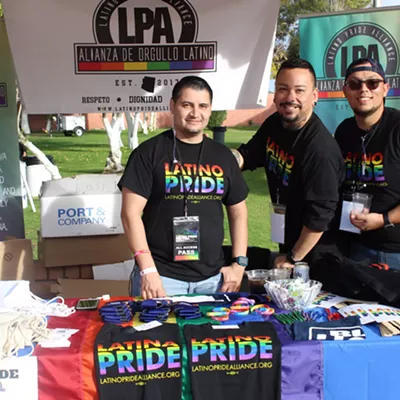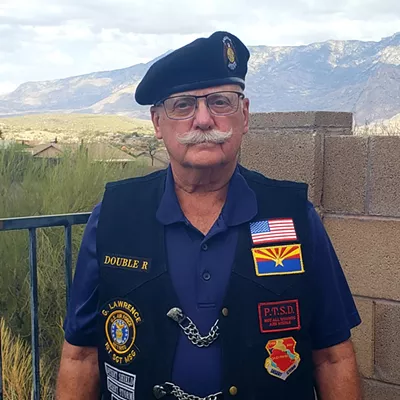In the next few weeks, the political climate will only get louder. The first stretch of the campaign season has begun, as incumbents no longer have to keep quiet about their future plans for higher office.
At the same time, Arizona's radical new public campaign finance system will be put to the test.
Voters passed the Citizens Clean Election Act in 1998, paving the way for candidates seeking state office, from the legislature to the copper dome, to use public money to pay for their campaigns.
To qualify for full campaign funding from the government, candidates must agree to follow strict spending limits and collect a certain number of $5 contributions from a certain number of voters. The office sought determines the number of $5 contributions a candidate must collect. For example, gubernatorial candidates must collect $5 from 4,000 voters statewide, while legislative candidates must collect it from 200 district constituents.
In exchange, candidates for governor can receive $409,950 in campaign funds leading up to the primary election and then $614,930 more for the general election. Legislative candidates can receive $10,790 for the primary and $16,180 for the general election. On top of that, a publicly funded candidate can receive up to three times what he started with to match his opponent's funds.
But first a candidate has to qualify, which is where the forms come in. Each $5 contribution must be accompanied by a completed form, and each form must be capable of surviving scrutiny when randomly sampled by county recorders.
Last summer, the commission received an initial shipment of 150,000 forms, most of which went out to political parties around the state and the Clean Elections Institute, a non-profit pro-public campaign funding organization. The contribution forms come 1,000 to a box and the commission is expecting another 80 cases to come in the mail this week. They've had to store the boxes temporarily along the walls of their break room.
"They're going quick," said executive assistant Paula Ortiz at the commission's Phoenix office. "People are picking them up four boxes at a time."
The 2000 election served as a test run for the system. The Clean Elections Fund paid for the campaigns of 58 candidates for the legislature and the Corporation Commission. Fourteen of these publicly funded candidates won seats in the legislature and two more took seats on the Corporation Commission.
This year, with new legislative districts and all five top offices up for grabs, the managers of the system are looking at providing $17 million in public funds to 206 "clean" candidates.
This year could make the system, but it would take a three-fourths vote in the state legislature to break it.
That's not to say there haven't been opponents who've tried to undermine it other ways.
The act has survived lawsuits in Superior Court brought by its opponents, namely Rep. Steve May of Tempe and cotton lobbyist Rick Lavis. Their legal counsel, Washington, D.C.-based libertarian advocacy firm the Institute for Justice, has filed for special action with the Arizona Supreme Court to cut off the act's main funding source, a 10 percent surcharge on all civil and criminal fines.
The Citizens Clean Election Commission, which carries out the provision of the act, has also fended off speculation that its funds could bottom out midway through the election cycle.
But the success of the clean elections system is just as much in the hands of the voters and the candidates themselves as it is in the gavel of Ruth Jones, who took the helm of the commission this month.
According to the Clean Election Institute, which evolved out of the group that originally put the act on the ballot, there seem to be enough candidates willing to at least give it a shot.
"Here's the clincher statewide," the institute's executive director, Cecilia Martinez, said. "We'll see 70 percent of candidates try to run clean, but I don't think all of those will qualify."
Martinez predicts 50 percent of the statewide candidates will ultimately qualify for public money and 70 percent of all legislative candidates will run using public funds.
To date, 16 candidates have filed papers stating that they plan to participate.
Voters, though, may not be as savvy. A poll commissioned by the Clean Elections Institute in December showed that 58 percent of respondents didn't have a clue of what the Clean Elections Act actually does. Candidates have encountered confusion among voters, prompting the Clean Elections Institute to print index cards that put it in plain terms why a candidate is asking for $5.
RUNNING "CLEAN" ISN'T as easy as some candidates think. An example is Sharon Collins, deputy director of Governor Hull's Tucson office, who is eyeing the Secretary of State's office and hoping to get there campaigning with public money. To do so, she needs to collect $5 from 2,500 voters by August 22.
Initially, she'd hoped to collect the bulk of her qualifying contributions by the turn of the year. Collins started collecting contributions as early as she could, which was August 1, 2001 for statewide candidates. As of last week, she'd collected only one-fifth of her quota.
Collins admits the task was more difficult than she'd anticipated.
"In terms of $5, voters still want to know your platform and you have still have to sell yourself. They still want a piece of you," Collins said from her campaign mobile phone, purchased within the independent expenditure limits set by the law.
But Collins is optimistic and plans to dip into the Maricopa County pool of voters later this month. "I'm not good at asking for money, but I don't mind asking for $5 and most people have it on them," she said.
She acknowledges that candidates must forge their own paths since no precedent has been set for running for statewide office under the new law. Members of her staff have turned to the Clean Elections Commission and the Clean Election Institute for guidance, attending candidate-training seminars sponsored by both groups.
Martinez said voters can expect to find themselves invited to fewer fundraising dinners and more "Five Dollar Parties," where candidates serve nominal refreshments to small groups of voters. It's in these get-togethers where a large part of the qualifying contributions forms are going to end up.
A new policy passed by the Citizens Clean Election Commission will make it even harder to earn full public funding. Under the "One Bite at the Apple" rule, candidates have only one shot to submit qualifying contributions. If for whatever reason the forms fail to withstand scrutiny, candidates will have to collect a completely fresh batch of contributions.
This policy generated numerous complaints, according to the Commission's executive director, Colleen Connor. The Clean Elections Institute is one of the loudest voices against the policy, saying it will discourage candidates from joining in. Already, Rep. Tom O'Halleran, a Sedona Republican from District 2 who will probably seek legislative office in the new District 1, has listed the policy as one reason he won't be running on public funds this cycle.
"I have nothing philosophically against Clean Elections," O'Halleran said. "But I think we need to have them done the right way."
Senate President Randall Gnant also voiced concern earlier this month in a meeting with Connor and commissioner Gene Lemon. Days later, at the first commission meeting of the year, Lemon forwarded a compromise he called "the slickest way to use the electronic age." He suggested that the commission should pursue the creation of a computer system with which candidates can check the validity of their contributions before filing them.
Another issue that could haunt the election is a finding by the state auditor general's office that the commission does not have the statutory authority to match funds transferred from a political war chest into a candidate's campaign fund.
The commission has denied the audit's findings and said it will continue to match these funds, although it may open them to litigation in the future. Then again, nearly anything they do could open them to future litigation.
But if they are forced to change their position on the matter, it could open candidates to huge financial disadvantages. Again a prime example, Sharon Collins could face Sen. Brenda Burns in the primaries and would not be able to receive funds to match Burns' war chest, which the Arizona Republic reported contained more than $107,000.
If the law works as its framers intended, it could provide a huge boost to movements in 32 other states that are trying to pass similar laws.
"We're at the forefront of this movement," Martinez said. "The country is looking to us to make it work. Whether you're a believer or not, this is a whole new way of doing elections."
In the meantime, the nine-person staff of the Clean Elections Commission will be focusing on keeping the system running through the election and at the same time beefing up its public exposure.
Billboards featuring the Clean Elections bola-tied good ol' boy mascot "Five Dollar Bill" have sprung up throughout the state, and radio advertisements are getting air time. The commission is also negotiating with ASU to sponsor the candidate debates mandated by the act.






